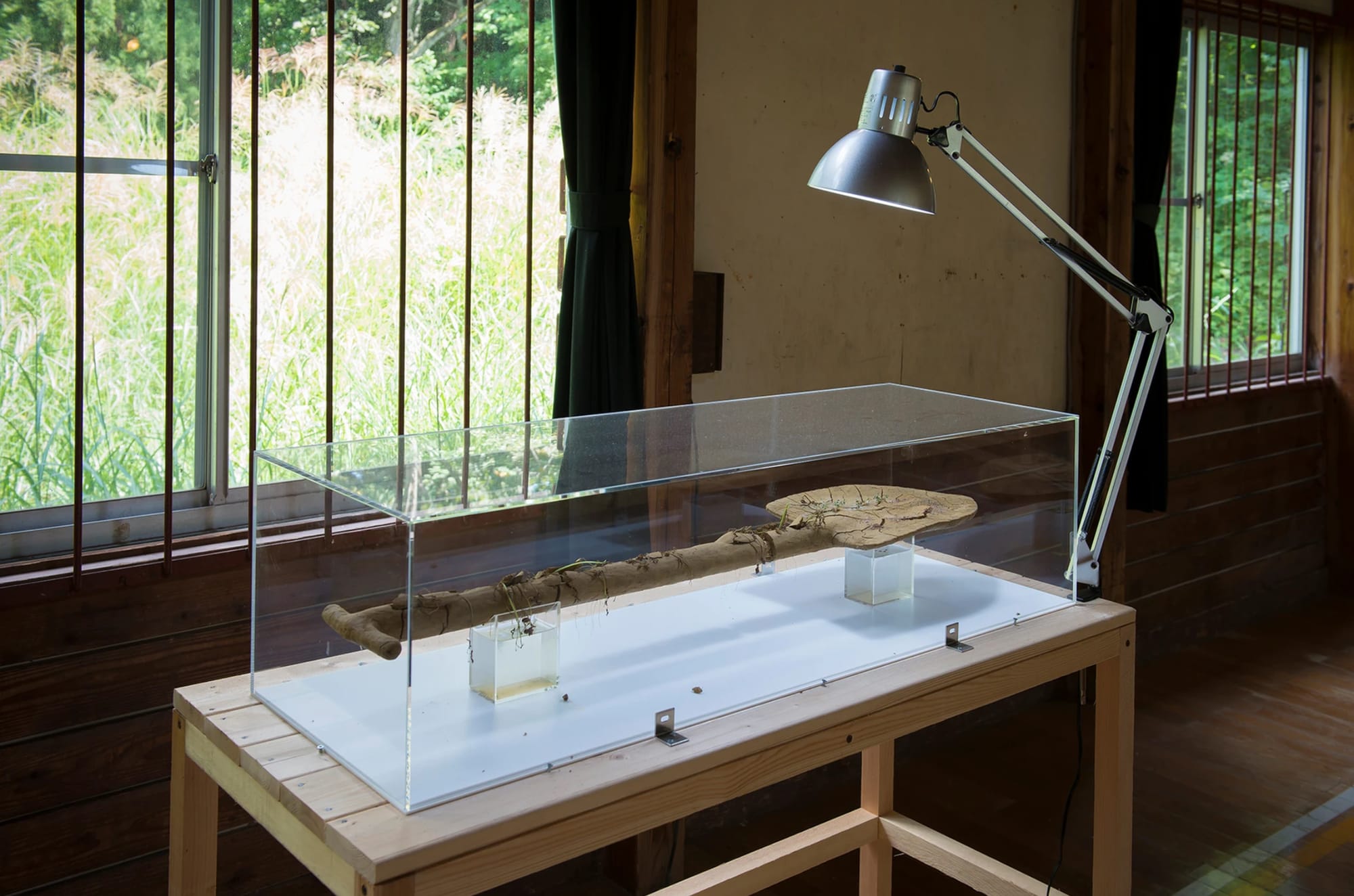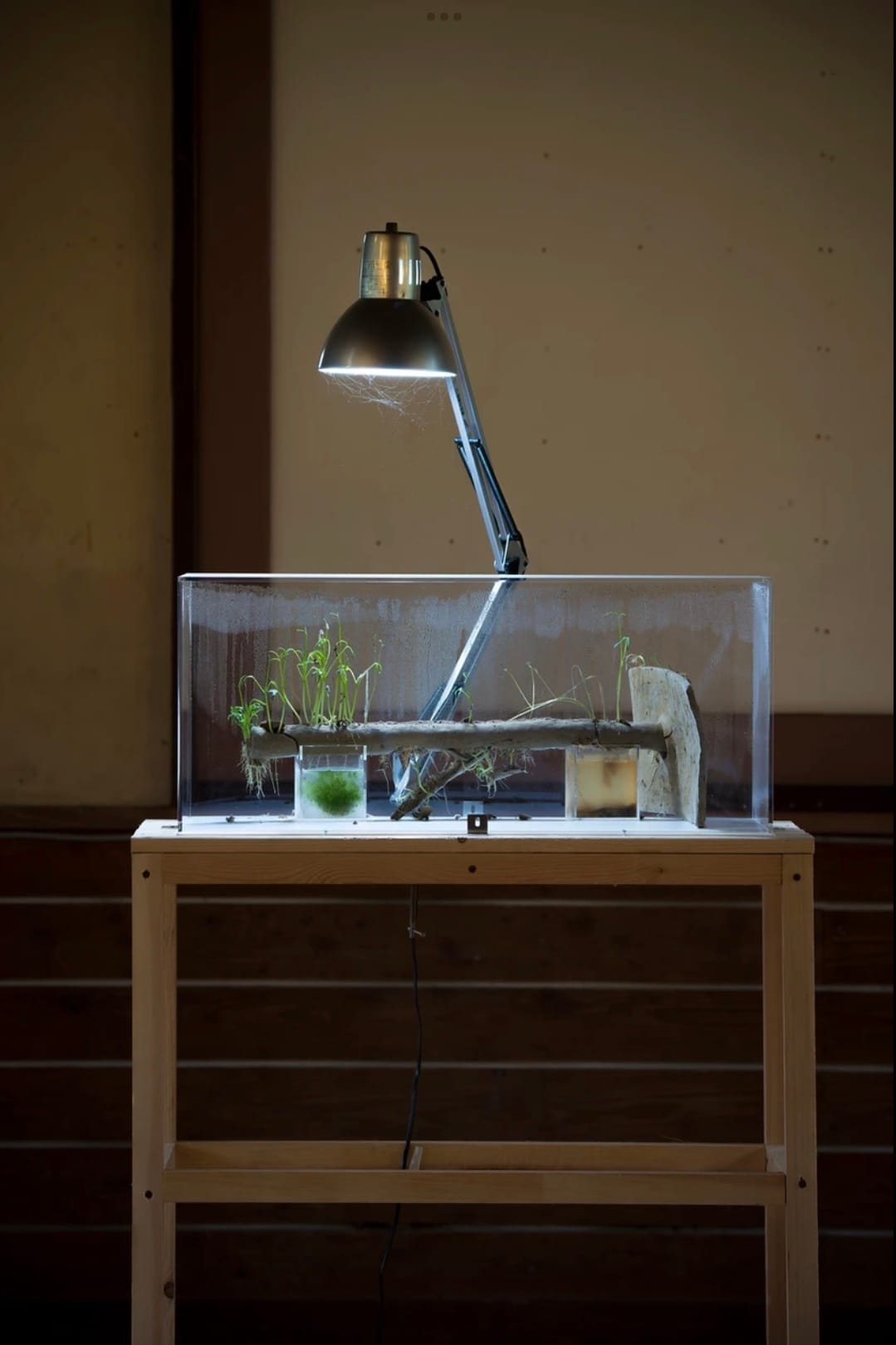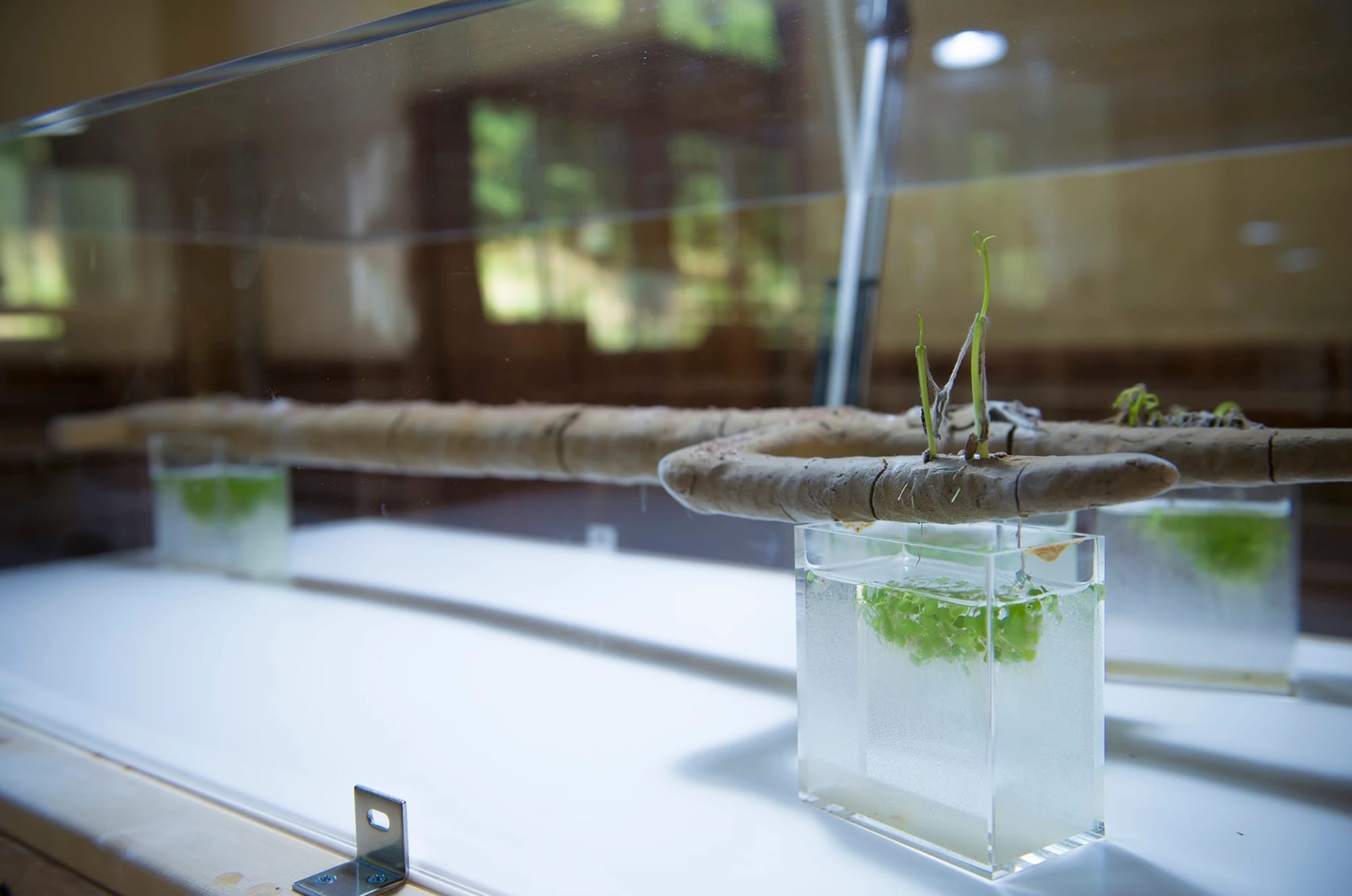In collaboration with Kyoto Seika University Japan and Tokamachi village, Indonesian pottery artist Albert Yonathan Setyawan created a series of replicas of agricultural tools titled Transitory Nature of Earthly Joy. These are replicas of instruments used during Japan’s Yayoi period, the civilization’s first period in which they began to rely on agriculture instead of hunting and gathering. These clay replicas were made with the seeds of various agricultural plants within them. Hence, throughout the project, corn and rice began to sprout from the pottery, eventually completely overtaking the tools, rendering them plant media.

As the plants grow, Transitory Nature of Earthly Joy becomes a reflection of the delicate natural balance that Japanese agriculture has maintained over the years, especially so in Tokamachi, a historical village of farmers. Tokamachi is currently facing the threat of an aging population. With no younger generations to continue their work, they wish to share their agricultural wisdom with a large audience through Transitory Nature of Earthly Joy. It is about sharing a way of life where humans can be fed without corruption and agriculture can thrive and support nature simultaneously. This is why Transitory Nature of Earthly Joy by Albert Yonathan Setyawan is aligned with the United Nations Sustainable Development Goals of Life on Land and Zero Hunger.

In Western countries, the Tokamachi agriculture philosophy has been known as circular agriculture. These farming techniques use agricultural biomass, wastes, and residues that are reusable and can benefit other food system processes to minimize environmental impact. One way circular agriculture is practiced is by planting successive crops in one plot of land, increasing the land’s biodiversity as the crops rotate. In this agricultural system, livestock are also allowed to roam freely so that their wastes and residues can be used as biofertilizers for the soil.

Albert Yonathan Setyawan’s Transitory Nature of Earthly Joy uses pottery to symbolize the resilience of nature and the sustainable practices of Japanese agriculture. By embedding seeds in clay replicas of Yayoi-period tools, Setyawan creates pieces that transform as plants grow, overtaking the pottery and demonstrating the symbiotic relationship between humanity and nature. This project, rooted in Tokamachi's rich agricultural tradition, highlights a farming philosophy where sustainability and biodiversity are paramount. Hence, Transitory Nature of Earthly Joy reminds audiences of agriculture's potential to nourish both the land and its people without compromising natural ecosystems.
Find out more about Transitory Nature of Earthly Joy and other pieces by Albert Yonathan Setyawan on his website www.albertyonathan.com or Instagram @albertyonathansetyawan.
